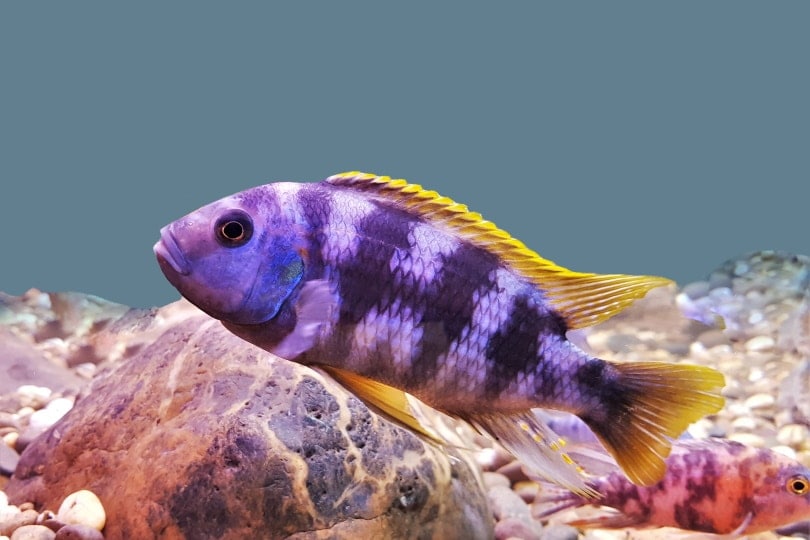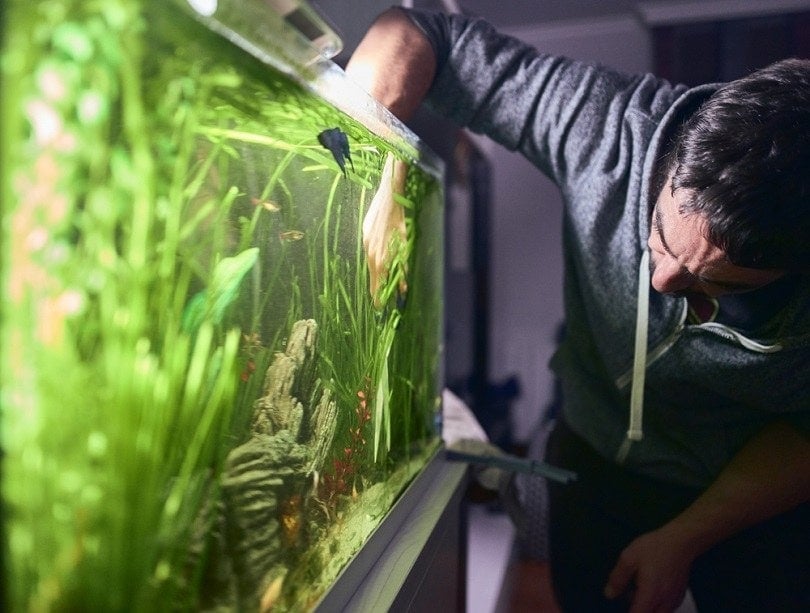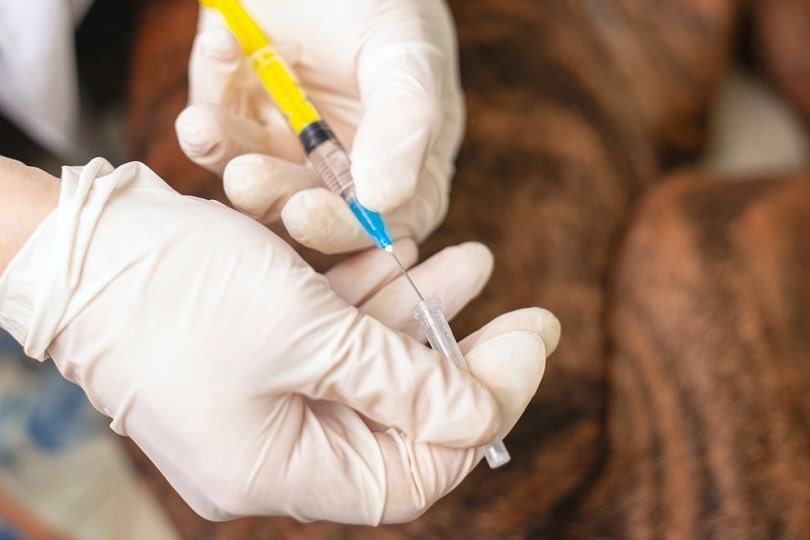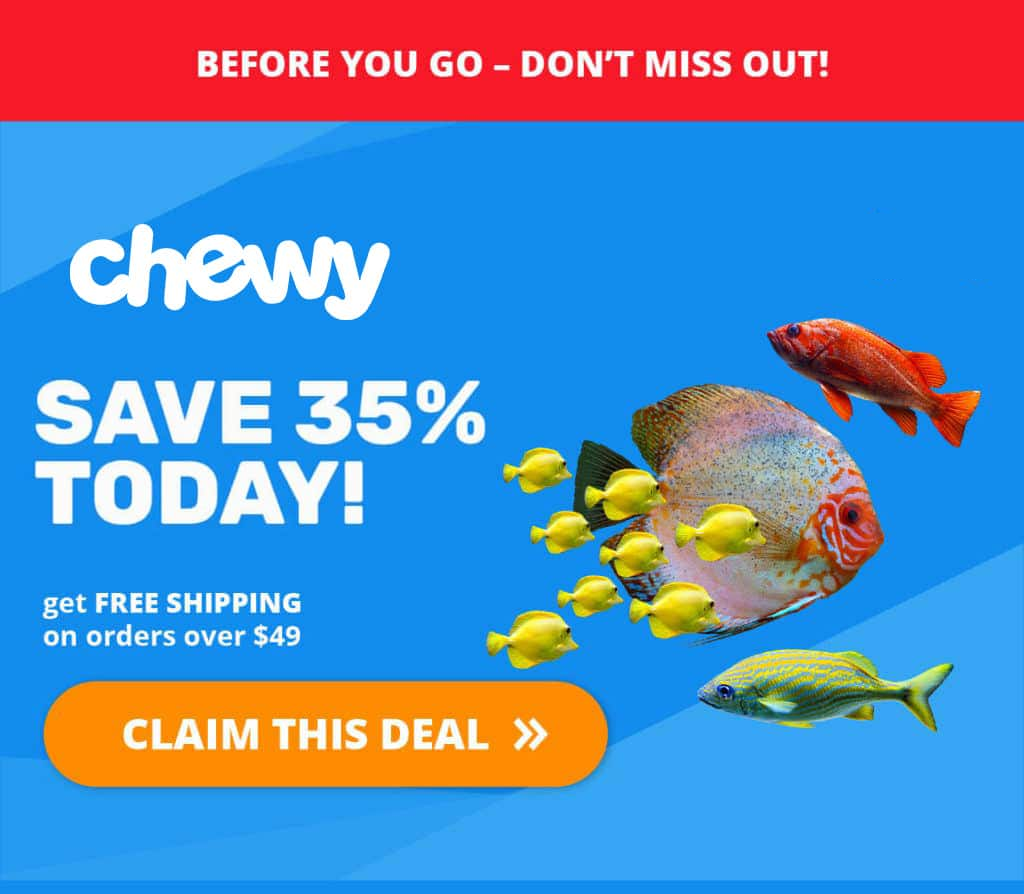Hatchetfish: Pictures, Size, Care, Tank Setup & More Vet-Approved Info
Updated on
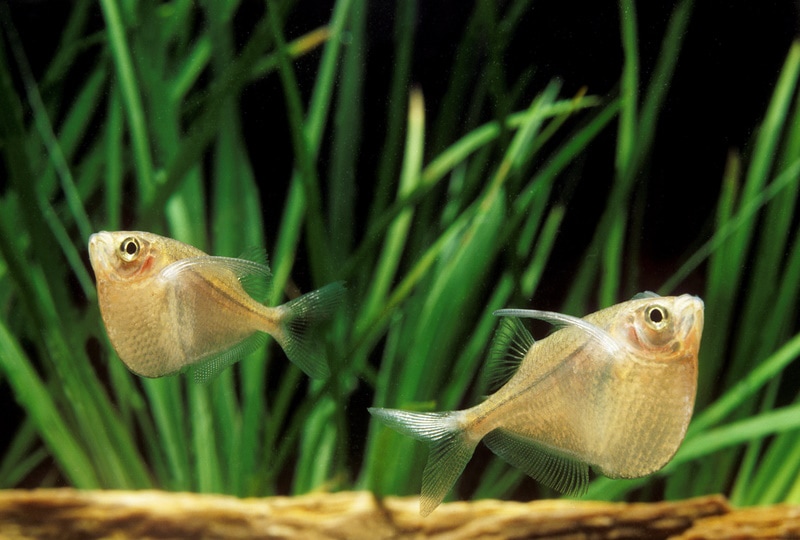
Click to Skip Ahead
Enthusiasts who want to have a community tank have plenty of species from which to choose. You can count the hatchetfish among them. These fish get their moniker from their resemblance to the tool of the same name. Coupled with their body shape with color, you have a unique addition to our aquarium.
The term “hatchetfish” refers to a family of fish found in Central & South America. The most common of these fish seen as a pet is the common hatchetfish or river hatchetfish (Gasteropelecus sternicla). Keep reading to learn more about these fish before adding them to your aquarium.
Quick Facts About the Hatchetfish
| Species Name: | Gasteropelecus sternicla |
| Family: | Gasteropelecidae |
| Care Level: | Intermediate |
| Temperature: | 73-81 °F (23-27 °C) |
| Temperament: | Peaceful when in a shoal |
| Color Form: | Silver with spots, line along lateral aspect of body |
| Lifespan: | 5 years (estimated average) |
| Size: | 2.5 inches (6.5 centimeters) on average |
| Diet: | Carnivore |
| Minimum Tank Size: | 15 gallons for a group of five |
| Tank Setup: | Lots of structures with plants, preferably floating species, and driftwood |
| Compatibility: | Other peaceful community species that use other areas of the tank than the surface |
Hatchetfish Overview

You’ll see this species listed as the common hatchetfish or river hatchetfish. As you may expect, these fish live in the Amazon River and its tributaries. They have extremely well-developed muscles along their belly and abdomen (along their “hatchet”), which allow them to jump out of the water to catch insects as they propel themselves with their pectoral fins.
They’re typically a peaceful fish, but their musculature and ability to jump backfires when they’re spooked or startled, as they can jump out of their aquarium when this happens. This makes lids mandatory for these fish.
How Much Does a Hatchetfish Cost?
You can expect to pay between $5 to $10 apiece for the hatchetfish. Some sellers offer them in groups for a discount. You can take advantage of a deal and get an instant school for your new additions. Like all shoaling fish, they prefer having conspecifics and other peaceful fish. This means that you look to purchase at least five individuals as a minimum.
Typical Behavior & Temperament
The hatchetfish is a dichotomy. They’re a peaceful tankmate, yet as insect hunters, they’re fast. They also have a unique trait that is fitting, considering their place in the water. While darting around the aquarium, they can become airborne using the thrust from their belly muscles and the balance from their pectoral fins. These actions can help them catch insects on the wing. Hatchetfish don’t fly, but they can travel up to 13 feet when they leap out of the water.
Appearance & Varieties

The hatchetfish has a triangular-shaped body, with a seemingly small head and large torso. It has large pectoral fins that dwarf the size of the caudal, dorsal, and ventral fins. The color ranges from brilliant silver to a warm tan. The females are noticeably bigger than the males. The fish develops a dark horizontal stripe along its ventral side as it ages.
How to Take Care of Hatchetfish
With the correct setup, the care for these fish is relatively simple, provided you pay close attention to ensure that your fish don’t jump out of the water.
Aquarium Size
We recommend at least a 15-gallon tank for a group of five hatchetfish. The fish can get a decent size. They also occupy the top of the aquarium near the surface. Longer tanks are preferred over taller ones. The recommendation of a 15-gallon tank should be viewed as a minimum, not an ideal. These fish will definitely benefit from a larger tank. A lid is absolutely necessary for these fish due to their tendency to jump.

Water Conditions
The water in the Amazon is soft; however, this fish can readily adapt to varying amounts of dH levels (1-15), provided they are consistent. If you’re new to the hobby of fishkeeping, it’s best to not tamper with the water hardness.
These fish are also very adaptable to a relatively wide range of pH values; appreciating anything from 5.5-7.8, provided it remains consistent. Once again, if you’re new to the hobby, it’s best to not tamper with the pH provided the water you use naturally has a pH between their acceptable range.
This fish is most comfortable in temperatures between 73-81 °F (23-27 °C). This can be achieved with a water heater, and ideally a water thermometer to keep track of the temperature.
You should also do weekly water changes to ensure the conditions stay stable and remove debris. Performing a water quality check during your weekly water changes is also a good idea and is recommended.
Tank Setup: Plants, Substrate, and More
The hatchetfish thrives in a planted tank. It’s also good to include some floating varieties since they swim near the surface; surface plants can help discourage unwanted jumps from these fish. Vegetation doesn’t form a significant part of this fish’s diet. While using live plants versus artificial ones creates a more natural environment, artificial plants are undoubtedly easier to care for.
These fish don’t have a specific substrate requirement; however, adding substrate is definitely beneficial for the aquatic environment in general. Substrate can provide another surface for beneficial bacteria to grow on and can even be useful by plants for rooting purposes.
Are Hatchetfish Good Tankmates?
The swimming habits of the hatchetfish provide an excellent way to populate a community tank with species occupying different layers. Livebearers, larger tetras, angelfish, and Dwarf Gouramis will make suitable tankmates. Remember that this species is carnivorous, although it prefers insects and their larvae instead of other fish.
We don’t recommend keeping them with other fast and semi-aggressive fish like tiger barbs. Likewise, their energetic nature would probably stress slow-moving varieties, such as Bettas. Adding bottom feeders, such as otocinclus catfish, can add more “spark” to your aquarium, provided it is large enough to support all the community fish you choose.
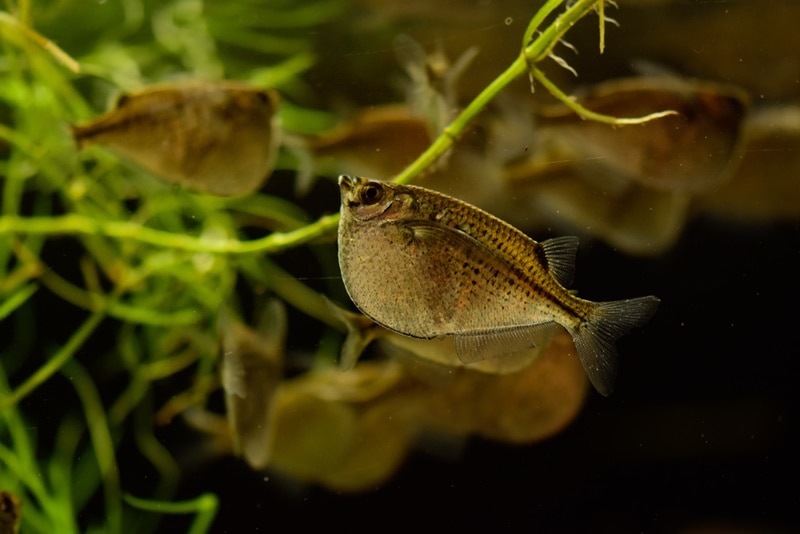
What to Feed Your Hatchetfish
You can offer your hatchetfish freeze-dried and live foods, such as bloodworms and brine shrimp. They may also eat flake foods. We recommend feeding only as much as you observe your fish consume. These foods can quickly foul the water if you overfeed them. If your fish won’t take flakes or pellets, give them live foods that they’ll recognize as something to eat. These fish are notoriously greedy feeders.
Keeping Your Hatchetfish Healthy
Stable conditions are the key to keeping hatchetfish healthy. This is done by ensuring that you have an acceptable water filter with your aquarium, and stay on top of your weekly partial water changes. It’s also important to keep in mind that any new fish or plants you introduce to your tank should be quarantined for a period of at least 4-6 weeks to ensure that you don’t introduce unwanted diseases or parasites into your aquarium. Plants in particular may harbor unwanted guests in the form of snail eggs which can quickly overrun your aquarium if you don’t quarantine them.
Breeding
Not much is understood about breeding hatchetfish. Scientists know this behavior is associated with climatic events, like seasonal flooding. That can make replicating the necessary conditions difficult, if not impossible. We do not recommend breeding these fish as pets.
Are Hatchetfish Suitable For Your Aquarium?
Hatchetfish are fascinating animals. Their appearance is striking and makes their fast swimming even more entertaining. As long as you have a tight-fitting hood, your fish will stay in their tank and not on the floor. They make excellent tankmates with other peaceful community species. You’ll have your aquatic pets for a long time with the proper conditions.
Featured Image Credit: slowmotiongli, Shutterstock




